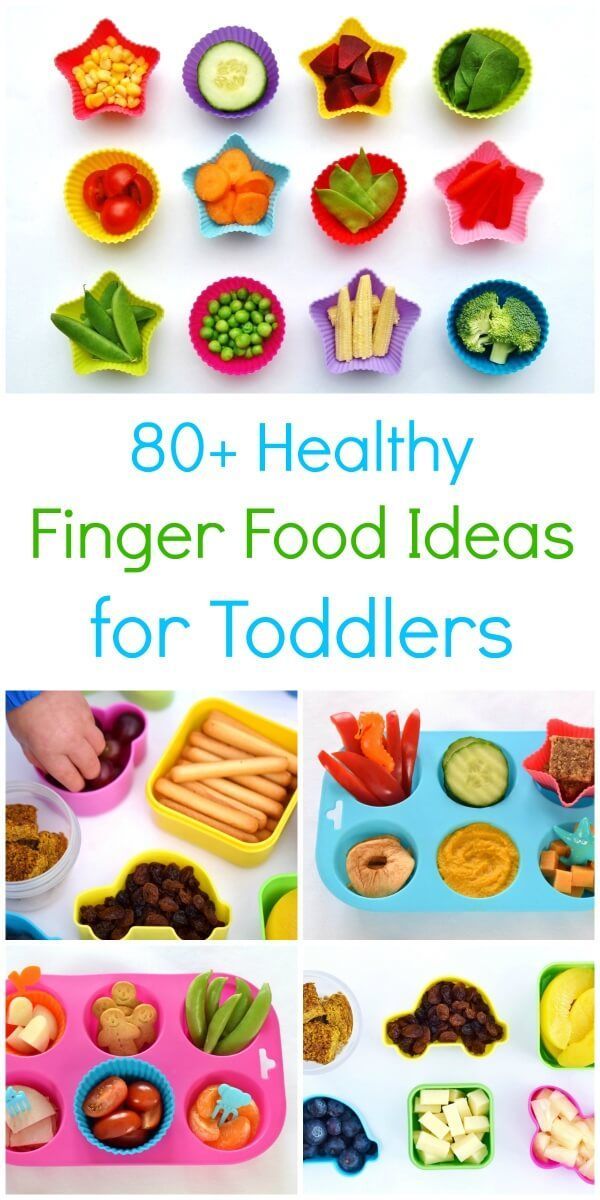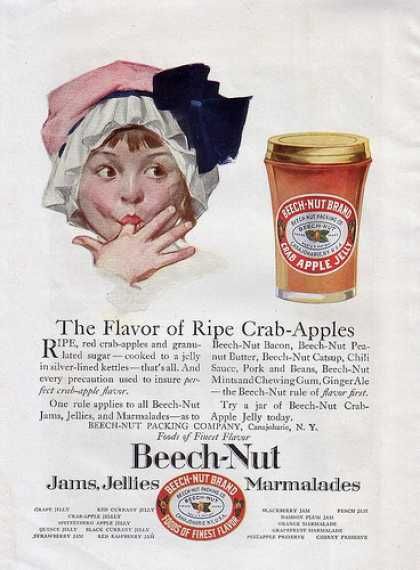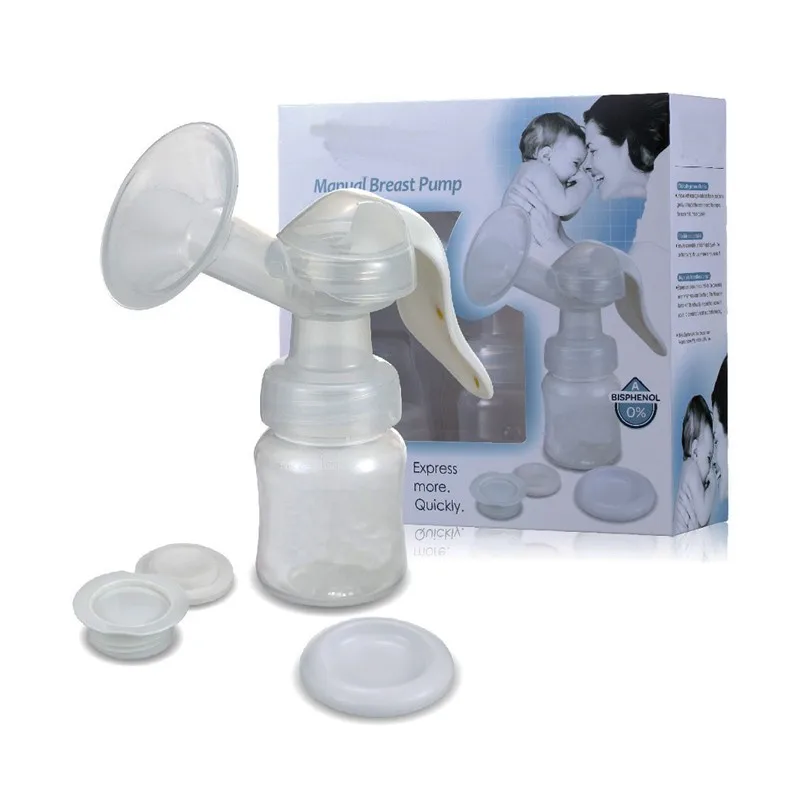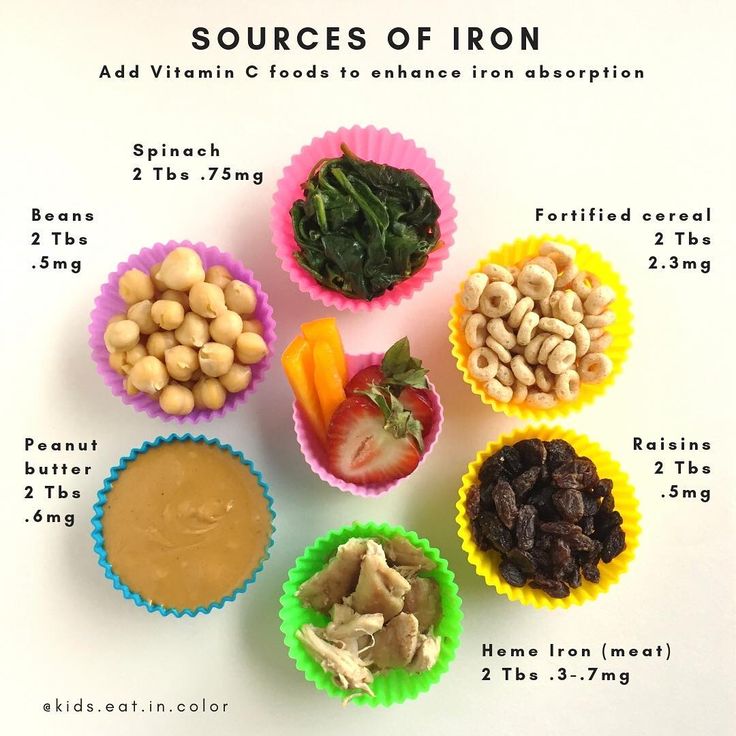Dr sears baby food
Introducing Solids: When to transition your baby To solids
Introducing Solids: When to transition your baby to solids
You’ve heard the saying breast is best when it comes to feeding your baby. And for the first year of her life, your breastmilk is all that your baby needs for optimal health and development.
But what parent isn’t anxious and ready to start feeding baby’s appetites with a spoonful here and a little taste there, particularly as your baby approaches 6 months in age?
Exploring what your baby likes—and doesn’t like to eat—is another way to discover her emerging personality.
Experts at the Mayo Clinic say if you’re not sure whether your baby is ready, ask yourself these questions:
-
- Can your baby hold his or her head in a steady, upright position?
- Can your baby sit with support?
- Is your baby interested in what you’re eating?
If you answer yes to these questions and you have the OK from your baby’s pediatrician, you can begin supplementing your baby’s liquid diet and start introducing solids. Just remember that at this early stage, foods are mainly for socializing and motor skill development.
Follow your baby’s cues when it comes to starting foods. “Just because your baby is old enough to start solid foods doesn’t mean it’s the right time for her,” says Dr. William Sears, author of The Portable Pediatrician. “If your baby keeps turning her head away or pushing the spoon away, then she is clearly not ready.”
According to Dr. Sears, babies don’t need solid foods for nutritional purposes until they’re at least 1 year old, so there’s no pressure to make your child eat earlier, particularly if he’s nursing well or feeding on formula, says the well-known pediatrician.
Foods to avoid for allergy or bacteria-related reasons, until age 1, include honey, egg whites, wheat, nut products and berries. Skip the peanuts and shellfish until at least age 2, says Dr. Sears, because of allergy issues.
Start every meal with breastfeeding first, or formula if you’re feeding that, and then provide baby with the opportunity to try a new food. Introduce one food at a time, a week at a time, and watch for signs of constipation, gas, fussiness or bloating, which may indicate baby isn’t ready for that particular food.
Introduce one food at a time, a week at a time, and watch for signs of constipation, gas, fussiness or bloating, which may indicate baby isn’t ready for that particular food.
Related articles: Breastfeeding is the best option to feed your baby
Here’s what to expect with feeding baby for the first year
| Age | 0-6 Months | 6-9 Months | 9-12 Months |
| What she’s eating | Exclusively breastmilk or formula. | Primarily breastmilk or formula. | Primarily breastmilk or formula. |
| What to introduce | At 6 months, pureed single-ingredient foods like banana, applesauce, pear, sweet potato, or rice cereal mixed with breastmilk or formula. | Pureed mixed ingredient foods, like apple-banana sauce or pureed meats; increase the texture as she seems interested in it. | Finely chopped finger foods like graham crackers, soft fruits, pasta, cheese, or fork-mashed foods from the family’s meal. |
| What to watch for | Your baby can become constipated when you start solids, if this happens stop the food and increase nursing or formula feeding. And never add cereal to a bottle of breastmilk or formula, or feed cereal from a bottle. | Emerging teeth; which allow you to begin to gradually increase the texture in foods. Choking is always a concern, so keep pieces small and odd-shaped, never tubular or round. | Baby’s readiness to begin to self-feed; offer her small pieces of cheese, for example, and let her work on those fine motor skills in picking them up. |
Other articles that have related themes to Introducing Solids: When to transition your baby to solids are:
See How Chef Tyler Florence Makes Baby Food
Parenting Against Picky Eating
Tips on How to Transition Baby to Solids
DIY Baby Food: Economical, Easy and Nutritious
DIY Baby Food: Economical, Easy and Nutritious
10 Ways to Shape Young Tastes
Tastes and cravings are learned in the body and in the brain but influenced mostly by cultural eating practices. While American children learn to love hamburgers, children in China or India learn to love other foods. Here are some time-tested ways to shape young tastes from birth onward.
While American children learn to love hamburgers, children in China or India learn to love other foods. Here are some time-tested ways to shape young tastes from birth onward.
{DOWNLOAD + SHARE}
1. Breastfeed As Often and for As Long As Possible
Almost everyone now knows that human milk is the gold standard for infant nutrition. In fact, the positive effects of breastfeeding on adult health is the prime example of how early metabolic programming can protect against adult diseases such as diabetes and high blood pressure. You can lower the incidence of just about every disease by breastfeeding. And the effect is does related: the longer and more exclusively you breastfeed your children, the greater the health benefits. Research has traced some of these health-promoting effects to the fact that breastfed children grow up with lower and more stable insulin levels. Growing up with too high and unstable insulin levels in the bloodstream produces an unfavorable biological environment, so the body and brain cannot grow optimally. Other benefits of breast milk include its heart-healthy fats and immune boosters and the gut-friendly quality of human milk protein. Here are some specific ways that breastfeeding can shape young tastes.
Other benefits of breast milk include its heart-healthy fats and immune boosters and the gut-friendly quality of human milk protein. Here are some specific ways that breastfeeding can shape young tastes.
It promotes a good gut feeling.
Breast milk is known as an “easy in, easy-out” food. Its perfect balance of the right kinds of fats, proteins, and carbohydrates makes it easy on the intestines. Breastfed babies begin life associating good gut feelings with eating. They also associate the warmth and comfort of being close to Mom with mealtime. Could there be a better food-mood connection?
It provides ideal metabolic programming.
Breast milk gives babies the best possible metabolic programming in the first weeks and months of life. The unique brain-building fats in breast milk help infant brains grow to be the best they can be. The many immunological factors in human milk help the baby’s own immune system to develop. It’s interesting to note that breastfeeding during infancy is associated with a lower lifelong risk of many diseases thought to be caused by immune system dysfunction, including juvenile diabetes, multiple sclerosis, and Crohn’s disease.
It introduces foods of the culture.
Breast milk plays an important part in transmitting taste preferences for different cultures’ cuisines. A mother’s milk actually carries flavors from the foods she eats. Breastfeeding gets babies ready to enjoy the more flavorful foods their families eat. Variations in the taste of the milk from day to day prepare baby for a varied diet in the years ahead.
It prevents overeating.
Breastfed babies seem to grow up being better able to decide how much to eat. Studies have shown that children who are breastfed are less likely to be obese in adolescence.
2. Shape Young Tastes by Serving Fresh or Frozen Baby and Toddler Food
Introduce your baby to the flavor of fresh foods right from the start. The less canned formula and jarred food your baby and toddler eats, the better. When toddlers eat fresh food, they learn what real food tastes like in the mouth and feels like in the gut. They learn to enjoy a greater variety of flavors and textures. These early encounters with solid food are a window of opportunity for shaping young tastes. If your baby and toddler eats only freshly prepared, unsalted, and unsweetened foods, your child will prefer these foods and be more likely to reject salty, sugar-sweetened junk foods. It’s as simple as that.
These early encounters with solid food are a window of opportunity for shaping young tastes. If your baby and toddler eats only freshly prepared, unsalted, and unsweetened foods, your child will prefer these foods and be more likely to reject salty, sugar-sweetened junk foods. It’s as simple as that.
Infants and children do have a built-in preference for sweet-tasting foods. Breast milk is naturally sweet, and studies of newborns have demonstrated that babies just a few days old prefer sugar water to plain water. Babies’ inborn preference for sweet food is nature’s way of ensuring that they like to drink the good stuff – their mother’s milk – that helps them grow. Human mild and the healthy fresh foods that older babies enjoy such as bananas and other ripe fruits have a natural sweetness in them that is not overwhelming or artificial. A baby whose favorite foods are Mother’s milk and squishy bananas probably won’t go on to enjoy beverages sweetened with massive amounts of sugar, corn syrup, or artificial sweeteners. These foods will taste sickeningly sweet when compared with the naturally sweetened foods he learned to love early in life. When artificial sweets hit the programmed receptors in the lining of his gut, they trigger an internal biochemical alarm that registers as “yucky.” On the other hand, children who grow up with a steady diet of sweetened, salted, and greasy fast foods don’t register these foods as “yucky” because they have become used to them.
These foods will taste sickeningly sweet when compared with the naturally sweetened foods he learned to love early in life. When artificial sweets hit the programmed receptors in the lining of his gut, they trigger an internal biochemical alarm that registers as “yucky.” On the other hand, children who grow up with a steady diet of sweetened, salted, and greasy fast foods don’t register these foods as “yucky” because they have become used to them.
3. Graze on Grow Foods
One of the most common problems parents of one- to three-year-olds raise during routine checkups is that their child doesn’t eat enough. We believe one of the main reasons parents think their child doesn’t eat enough is that they expect their child to eat three good-sized meals each day. But young children have tiny tummies about the size of their fists. They feel more comfortable grazing on mini-meals throughout the day. Grazing is actually healthier for them.
Not only do most kids eat too much junk food, most older kids eat too much — period! This is true of adults as well. “Supersize me,” we say at restaurants. We have come to view large portions as the norm, and this has turned us into a nation of habitual overeaters. There are sensors in the stomach called stretch receptors. When the stomach is filled with a certain volume of food, these receptors signal the brain, “Stop, you’ve eaten enough!” Research on animals suggests that those who eat too much end up with stretched stomachs that wait longer to send the stop signal. A grazer, someone who eats small portions more frequently, gets used to feeling satisfied with less. By offering your child frequent mini-meals throughout the day, you can literally shape the size and portion expectations of your child’s tummy.
“Supersize me,” we say at restaurants. We have come to view large portions as the norm, and this has turned us into a nation of habitual overeaters. There are sensors in the stomach called stretch receptors. When the stomach is filled with a certain volume of food, these receptors signal the brain, “Stop, you’ve eaten enough!” Research on animals suggests that those who eat too much end up with stretched stomachs that wait longer to send the stop signal. A grazer, someone who eats small portions more frequently, gets used to feeling satisfied with less. By offering your child frequent mini-meals throughout the day, you can literally shape the size and portion expectations of your child’s tummy.
4. Avoid the ‘Terrible Threes”
Don’t feed your child foods containing these three artificial additives:
- high-fructose corn syrup
- hydrogenated oils, or “trans fats”
- any color additive with a number symbol attached to it (e.g., blue #1, yellow #5, red #40)
These are three easy-to-remember ways to recognize foods that merit the label “junk food. ” Not only are these ingredients themselves unhealthy for your child, but any packaged food that contains them is likely to be something you don’t want your kids to eat. If you make this one change – avoiding foods that contain any of these three ingredients – you will have gone 90 percent of the way toward de-junking your child’s diet. Food packagers actually add ingredients that are designed to entice children to crave a particular “mouth feel.”
” Not only are these ingredients themselves unhealthy for your child, but any packaged food that contains them is likely to be something you don’t want your kids to eat. If you make this one change – avoiding foods that contain any of these three ingredients – you will have gone 90 percent of the way toward de-junking your child’s diet. Food packagers actually add ingredients that are designed to entice children to crave a particular “mouth feel.”
5. Serve Nutrient-Dense Foods
Your baby or young child’s first foods should be grow foods, which we also like to call “superfoods.” These are the foods you most want your children to eat when they are older, so it’s important that they learn to like them and see them as a part of their everyday diet.
Grow foods are fresh foods or packaged foods that have undergone minimal amounts of processing. They are foods you eat as close to their natural state as possible. They do not contain artificial or factory-added ingredients, and they are nutrient dense — they pack a lot of nutrition into a relatively small volume of food. Nutrient-dense foods are different from calorie-dense foods, those that pack a lot of calories into a small volume of food. Studies have shown that children who are habitually fed nutrient-dense foods tend to prefer them and are less likely to overeat than children who are fed a steady diet of nutrient-poor foods.
Nutrient-dense foods are different from calorie-dense foods, those that pack a lot of calories into a small volume of food. Studies have shown that children who are habitually fed nutrient-dense foods tend to prefer them and are less likely to overeat than children who are fed a steady diet of nutrient-poor foods.
6. Model Healthy Eating Habits
Studies have shown that children tend to develop food preferences and eating habits similar to their mothers’ preferences and habits. If you present nutritious foods as the norm (“This is what we eat”) and eat them yourself, your children will eat them, too. It’s as simple as that. It is also important to keep your preschool and school-age children from exposure to junk food and advertisements for junk food.
7. Shape Young Tastes, Don’t Control Them!
Studies have shown that rigidly restricting children’s access to certain foods focuses more attention on these foods and increases children’s desire to eat them. Parents who try to control their children’s eating habits end up with kids who are more likely to overeat and to eat the wrong kinds of foods. Also, children who are raised in families with highly controlling and restrictive attitudes toward eating tend to have a higher level of dissatisfaction with their bodies.
Also, children who are raised in families with highly controlling and restrictive attitudes toward eating tend to have a higher level of dissatisfaction with their bodies.
Instead, think in terms of shaping your child’s food preferences. “Shaping” means providing your child with opportunities to make wise choices, and directing and redirecting behavior in ways that help your child learn to be in charge of himself. It’s good discipline, applied to food. Shaping is like gardening. You plant the seed, and while you can’t control how fast the plant grows or when it blooms, you can pull the weeds around it and water it and prune it to help it grow more beautifully. Don’t coerce your children into eating or penalize them for not eating. Don’t make threats such as “You must eat your vegetables or you can’t watch TV.” Long-term studies have shown that this is a for sure way to keep your child from liking vegetables. It’s okay, though, to set some priorities: “Grow foods before fun foods!” Just make sure there’s a tried-and-true favorite grow food on the table so that your child is guaranteed to enjoy eating at least one grow food on the way to a healthy dessert.
8. Surround Your Child with Nutritious Foods
What’s in your pantry? Studies show that preschool-age children are more likely to eat the foods that are most accessible. When children see a bowl of fruit or a platter of raw vegetables sitting on the table as snack food, this is what they will eat. They won’t go looking in the pantry for junk food. (This strategy works on moms and dads, too.) Restock your pantry with the foods you want them to like. These will become their familiar foods, or “family foods,” the ones that are the norm for your family. One reason fast-food restaurants and junk-food snacks are so popular is that they are very accessible — no chopping, no cooking, no dishes to wash. Just place your order at the drive-through window, or pop open the plastic wrapper. Reminders that these foods are available can be found almost everywhere. Tastes are shaped not only in mouths and guts but also in little eyes. Make sure your kids see healthy food when they walk into your kitchen.
9. Expose Your Child to a Variety of
New FoodsWe often hear parents complain, “My child just won’t try new foods.” Food researchers believe that an aversion to trying new foods is a built-in safety mechanism. Back when food was hunted or gathered from the fields and forests, it was smart to be cautious about trying new foods. Some could be poisonous – most likely the ones that were not sweet and that had a funny taste. Familiar foods, the ones the family ate all the time, were the safest. Experts in infant feeding and development believe that this innate fear is what causes a toddler to go through a stage of finicky or picky eating.
Whatever the reasons behind food aversions, getting children out of a food-choice rut can be frustrating. But it’s important to try. Your children need to eat a variety of foods to get the right balance of vitamins, minerals, carbohydrates, fats, and proteins. It takes creative marketing to get children to experiment with new tastes and textures. Here are some new-food marketing tips:
Start early.
Studies show that new foods are most likely to be accepted between two and three years of age. This is why it’s important to introduce a variety of grow foods during that window of opportunity in the early years.
Go small.
Begin with small amounts, such as 1 or 2 teaspoons. That way if your child doesn’t like the new food, no one gets frustrated and you don’t worry about wasting good food.
Make hunger work for you.
Children are most likely to accept new foods when they are especially hungry. Try offering new foods at times when your child is most hungry, such as at a midafternoon snack. A new food can be a fun novelty at snacktime. At mealtime, when other choices are available, a child may be less likely to try something new.
Hide the food.
Be sneaky. Hide a new food in a tried-and-true favorite food. Use a larger amount of the favorite food (e. g., four parts familiar food to one part new food), and each time you serve this combination, gradually increase the proportion of the new food.
g., four parts familiar food to one part new food), and each time you serve this combination, gradually increase the proportion of the new food.
Repeat, repeat, repeat!
Try the “rule of ten.” Studies from the Department of Nutrition at Penn State University have shown that repeated exposure (usually between ten and twenty times) to a new food eventually leads most children to accept it. So if your five-year-old shuns broccoli, don’t give up after only three or four times. Keep offering it in different presentations (e.g., steamed or raw with dip, drizzled with olive oil, covered with cheese, mixed with pasta, in soup and salads). Eventually your child will eat broccoli because it’s there, letting him know “this is what we eat.”
Play copycat to shape young tastes.
When you eat something that you are trying to get your child to like, let your child see you eat it with gusto. Children like to copy their parents, and they’re curious when it seems they might be missing out on something fun. If there’s something you want your child to try, eat it right in front of him without actually offering it to him. He may try the new food simply because you are eating it. Of course, you may have to fake it if you want your child to learn to like something you don’t enjoy. Parents who want to shape their children’s tastes toward healthy food often find themselves eating better when their kids are around. If a parent says, “No way am I eating that,” the child won’t eat it either.
If there’s something you want your child to try, eat it right in front of him without actually offering it to him. He may try the new food simply because you are eating it. Of course, you may have to fake it if you want your child to learn to like something you don’t enjoy. Parents who want to shape their children’s tastes toward healthy food often find themselves eating better when their kids are around. If a parent says, “No way am I eating that,” the child won’t eat it either.
Try the two-bite deal.
In our family we encourage our children, “Take two bites. If you like it, fine. If you don’t, you don’t have to eat it. You can try it again another time.” If it’s really a no, don’t push it.
Be enthusiastic.
Introduce the new food with enthusiasm and excitement. Make an appreciative face and say, “Yum, good!” Play show and tell: Name it, show it, describe it, take a bite yourself, and talk about how tasty it is. If you child rejects the food, don’t force the issue. Research shows that children are more likely to accept new foods when they are simply exposed to them rather than forced to eat them. Continue to serve the food, and one day your child may surprise you by asking for it. Be sure to present new foods positively. Children are more likely to try new foods willingly when the atmosphere around the table is happy and positive.
Research shows that children are more likely to accept new foods when they are simply exposed to them rather than forced to eat them. Continue to serve the food, and one day your child may surprise you by asking for it. Be sure to present new foods positively. Children are more likely to try new foods willingly when the atmosphere around the table is happy and positive.
Co-cook.
Children are more likely to eat foods that they have helped to prepare. If they’ve invested a lot of time and energy in helping to make the meal, they are going to want to sample their handiwork. They may even try the new food during the preparation and enjoy it.
Try peer pressure.
Invite other children to your home for a meal – kids who you know eat a variety of foods that you want your child to learn to enjoy. When children see other kids, especially their friends or slightly older kids whom they look up to, eating a new food, they are more likely to try it.
10. Enjoy Happy Meals
Eating is supposed to be pleasurable. The more friendly the atmosphere around the table, the more likely your children are to try new foods prepared in different ways, and also to eat appropriate amounts – not too little and not too much.
“My kids just won’t eat healthy food,” you may complain. What good is all this nutritional advice if your kids won’t eat what you serve? For those of you with infants less than one year of age, following our advice will be a “piece of cake.” Just get them on the right track from the start (which also means getting yourselves on this same train), and they’ll grow up eating healthy.
But what about the rest of you? Your kids are several years old, and you’ve already “ruined” them with chips, crackers, and cookies, and they completely refuse anything green or brown. Take heart. Of course, you haven’t really ruined them. You (like 99 percent of Americans) just never thought it mattered much. Your children will eventually accept these changes. In fact, their hearts, brains, muscles, hormones, bones, skin, and immune systems will love ‘you for It (even if their attitudes don’t quite so quickly). They will grow up without heart disease, diabetes, high blood pressure, cancer, and a whole host of chronic diseases. Maybe when they’re in their seventies and are able to play tackle football with their grandchildren, they’ll stop and finally realize “Hey, I’m still active and healthy, and I have my parents to thank for it!”
In fact, their hearts, brains, muscles, hormones, bones, skin, and immune systems will love ‘you for It (even if their attitudes don’t quite so quickly). They will grow up without heart disease, diabetes, high blood pressure, cancer, and a whole host of chronic diseases. Maybe when they’re in their seventies and are able to play tackle football with their grandchildren, they’ll stop and finally realize “Hey, I’m still active and healthy, and I have my parents to thank for it!”
Read online "Your Baby from Birth to Two Years", Martha Sears - LitRes
Published with the permission of the authors and their literary agents Denise Marcil Literary Agency (USA), with the assistance of the Alexander Korzhenevsky Agency (Russia)
Copyright © 1992, 2003 by William Sears and Martha Sears
© Polev D.V., translated into Russian, 2013
© Design. LLC Eksmo Publishing House, 2014
All rights reserved. No part of the electronic version of this book may be reproduced in any form or by any means, including posting on the Internet and corporate networks, for private and public use, without the written permission of the copyright owner. nine0012
nine0012
Books for expectant mothers
“Beginning of life. Your child from birth to one year”
A child's health is much more dependent on his parents than on all pediatricians combined. The famous pediatrician Yevgeny Komarovsky offers a guide that will help you avoid many problems. This accessible and fascinating book will tell in detail about the most difficult and responsible stage in the life of a child and his parents.
"Health of the child and common sense of his relatives"
A new edition of the wonderful book by the famous pediatrician Yevgeny Komarovsky.
Everything you need to know about pregnancy and breastfeeding, child growth and development, proper care and possible illnesses. Accessible, fascinating and very useful information addressed to future and already established parents.
"Waiting for a baby"
Nine months of pregnancy is the happiest and most responsible time for every woman.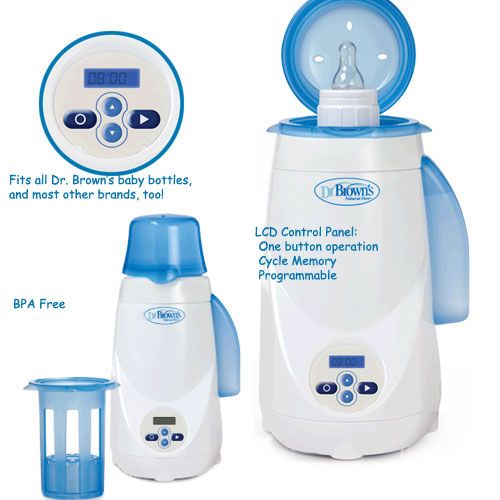 Reputable obstetricians and pediatricians with many years of experience William and Martha Sears share their professional experience. The book will help you find emotional peace and arm yourself with the necessary knowledge: you will learn about all the changes that will happen to your body, well-being and consciousness. nine0003
Reputable obstetricians and pediatricians with many years of experience William and Martha Sears share their professional experience. The book will help you find emotional peace and arm yourself with the necessary knowledge: you will learn about all the changes that will happen to your body, well-being and consciousness. nine0003
“9 months of happiness. Desk Guide for Pregnant Women”
Elena Berezovskaya, researcher and obstetrician-gynecologist, presents a complete guide for expectant mothers – everything you need to know about planning a baby, pregnancy, and preparing for childbirth. The book debunks popular myths about infertility, "hidden" infections, viruses, Rhesus conflict. You will get rid of worries, fears, worries and calmly endure pregnancy.
Introduction from Dr. Sears - Bill, Martha, Bob and Jim
Bill and Martha not only wrote this book, we lived it. We share with you our experience of caring for our own eight children and caring for thousands of other children, accumulated over forty years of pediatric practice. Our experience has been enriched with new ideas since Dr. Bill and Jim and their families joined our work. Having learned to astutely observe babies and their parents, we recorded everything that works almost flawlessly for most parents. Every day in our office, we eagerly absorbed the practical advice of successful parents. This book was written in the workplace. The book is generously littered with these tips. We understand perfectly well that loving your baby and wanting to be a good parent makes you receptive to any advice regarding your child. But children are too expensive, and parents are too vulnerable for an author who offers unverified information. We seriously take full responsibility for what we teach. Each statement has been carefully tested and has stood the test of time. nine0003
Our experience has been enriched with new ideas since Dr. Bill and Jim and their families joined our work. Having learned to astutely observe babies and their parents, we recorded everything that works almost flawlessly for most parents. Every day in our office, we eagerly absorbed the practical advice of successful parents. This book was written in the workplace. The book is generously littered with these tips. We understand perfectly well that loving your baby and wanting to be a good parent makes you receptive to any advice regarding your child. But children are too expensive, and parents are too vulnerable for an author who offers unverified information. We seriously take full responsibility for what we teach. Each statement has been carefully tested and has stood the test of time. nine0003
We also take into account the enormous busyness of today's parents. We ourselves live, juggling the suddenly emerging needs of our children and our own professional responsibilities. In this book, we present the basic principles that will help you become a responsive babysitter for your child when you find an approach that suits your child's needs and fits into your lifestyle. We recommend adopting a loving style of communication with your child in order to balance the high-tech life of the new age. nine0003
We recommend adopting a loving style of communication with your child in order to balance the high-tech life of the new age. nine0003
In this book, you will learn how to take care of your baby in such a way that both he and you show their best qualities.
Since the first edition of Your Baby from Birth to One, it has become a bible for caring for young children for millions of parents. We are very pleased to know that our advice has helped new parents around the world enjoy caring for their children. In the new edition you will find new topics, the discussion of which is based on the wishes of our readers, as well as new things that have appeared in pediatrics and child care over the past twenty years. nine0003
The euphoria of the work we have done, as a result of which many children and parents around the globe have become happier, healthier and found joy in communicating with each other, is reinforced by thousands of thank you reviews, 50,000 fans on Facebook, 5,000 readers of our magazine on Twitter and millions of visitors to our site. We are incredibly happy that through this book and our family advice presented in it, we have become, in some way, part of your family.
We are incredibly happy that through this book and our family advice presented in it, we have become, in some way, part of your family.
Bill, Bob, Jim and Marta SIRS
San Clemont, California
January 2013
Doctor of SIRS Online
ASKDRSEARS.COMThor of the Fores of Information, regarding the Children his health are now available online. Our online resource, personally maintained by Dr. Sears, goes into great detail about many of the topics covered in this book. We continuously update information related to child health issues so that you have the most up-to-date data. nine0003
At AskDrSears.com [1] , you can find some interesting and unique insights on topics such as pregnancy and childbirth, feeding babies under one year old, family nutrition, discipline and behavior, a capricious child, sleep and vaccinations.
Our site is unique because of:
• Detailed guide to over-the-counter medicines, including dosage information (under Dr Sears's Medicine Cabinet)
• Detailed information about many common and less common childhood illnesses (under Childhood Illnesses
• Monthly Pediatric Health News Updates (in Monthly Pediatric Health News Updates)
• Seasonal Pediatric Health Alerts (in Seasonal Pediatric Health Alerts)
• Frequently Asked Questions Questions)
• Interesting and amusing incidents from the life of Dr. Sears
Sears
• Updates to this book and all of our other books. We will publish all the most important changes and updates, including the most up-to-date medical information. nine0003
Also follow us on Twitter @AskDrSears and @DrBobSears, and on our Facebook pages: Ask Dr.Sears and Dr.Bob Sears.
I
Getting Started: The Basics of Child Care
There really is no such thing as one perfect way to raise a child, just as there are no perfect children and, believe me, there are no perfect parents - only people who have studied children and people with more experience than you. Being a parent requires an “industrial” internship. An abundance of "specialist" advice can damage a young parent's intuition and deprive them of their ability to learn from experience. We are going to show you how to become a specialist for yourself. The purpose of this book of ours is to help you and your child adjust to each other, or get used to each other. This is how you can express the essence of the relationship between parents and the child. nine0012
nine0012
Let's get started!
1
Attachment: what it means
All other child care books are missing a chapter that could be titled "Caring for your baby." Now, together with you, the expectant couple or new parents, we will write this chapter.
Based on my experience as a pediatrician [2] and Martha's experience as a nurse, as well as our common experience as parents of eight children, we believe that the best way to achieve true harmony between parents and a child is to raise a child naturally (natural parenting - from attachment parenting). It's a child-friendly approach that brings out the best in you and your little ones. Initially, mothers brought up their children naturally - as intuition and nature prompted them. This method has only recently needed a name, because it is basically the most natural approach to communicating with a child that any of us would choose if left to our own common sense. nine0003
Caring for your child
Forty years ago, when I started my pediatric practice, I had already completed internships at two of the most prestigious pediatric clinics in the world, and I seemed to know everything about children.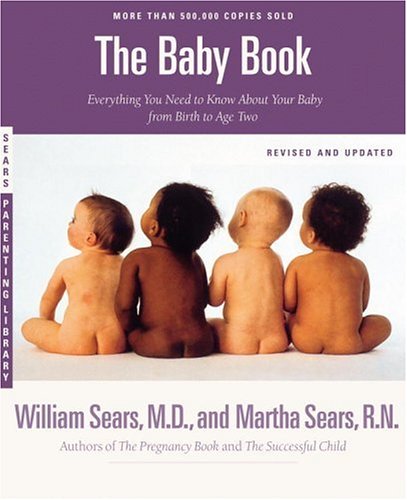 Our friends even often told my wife that she was very lucky to marry a pediatrician, but Martha retorted: “He only knows about childhood illnesses.” The first week of my pediatric practice was a real shock. Moms asked me all sorts of questions that had nothing to do with medicine: “Maybe we need to let the baby cry?”, “Will we spoil her if we pick her up too often?”, “It’s not scary if we sleep together with our child?" I did not know the answer to any of these questions, but my parents relied on me as a specialist. These were not medical questions, but questions relating to the nature of the relationship with the child. I only knew what we did with our own two children, but I didn't consider myself a professional because of that. Then I began to read all the books about childcare, just like you are now. Books threw me into complete turmoil. It seemed that they were based on the personal opinion of the authors, and not on real research. Most of the writers lacked either common sense or a scientific basis, or they preached what was fashionable, whether it produced positive results or not.
Our friends even often told my wife that she was very lucky to marry a pediatrician, but Martha retorted: “He only knows about childhood illnesses.” The first week of my pediatric practice was a real shock. Moms asked me all sorts of questions that had nothing to do with medicine: “Maybe we need to let the baby cry?”, “Will we spoil her if we pick her up too often?”, “It’s not scary if we sleep together with our child?" I did not know the answer to any of these questions, but my parents relied on me as a specialist. These were not medical questions, but questions relating to the nature of the relationship with the child. I only knew what we did with our own two children, but I didn't consider myself a professional because of that. Then I began to read all the books about childcare, just like you are now. Books threw me into complete turmoil. It seemed that they were based on the personal opinion of the authors, and not on real research. Most of the writers lacked either common sense or a scientific basis, or they preached what was fashionable, whether it produced positive results or not. nine0003
nine0003
I decided to turn to the real experts - the experienced parents of the children I see, who are excellent at their parenting responsibilities; parents who, in my opinion, are in harmony with their children, able to read the signs given by their children, and react intuitively and adequately; parents who enjoy being parents; parents whose children are cheerful and remarkably developing. These parents and their children became my teachers, and I became an avid listener and attentive observer, keeping careful records of their relationship style. I put together a whole list of "What Works". My wife, Martha, worked with me during those early years (until our fourth child, Hayden), and is still a childcare and breastfeeding consultant. My practice was our "field" research, so to speak, in the field, and at home we were waiting for our own growing laboratory. nine0003
After many years of listening and learning, having already had eight children of our own, we began to formulate some conclusions about the relationship between parents and children. From a huge variety of communication styles, we selected those that worked for most parents almost always. We shared these concepts with the parents we counseled and used them in the process of raising our own eight children. Over the years, Martha and I have changed our approach to accommodate our changing lifestyles, as well as the individual needs of our children (and we're still learning). In this little chapter you will find the most valuable thing we have learned forty years of practical pediatrics, caring for eight children and counseling thousands of parents. nine0003
From a huge variety of communication styles, we selected those that worked for most parents almost always. We shared these concepts with the parents we counseled and used them in the process of raising our own eight children. Over the years, Martha and I have changed our approach to accommodate our changing lifestyles, as well as the individual needs of our children (and we're still learning). In this little chapter you will find the most valuable thing we have learned forty years of practical pediatrics, caring for eight children and counseling thousands of parents. nine0003
Don't expect to master everything right away. The parenting profession relies on practical skill, and experience comes only with the application of one's own hands. Our recommendations are just tips to get you started. Based on these basics, you will grow and develop your own style, one that best suits your child's temperament and personality. In addition, it is impossible to accurately choose the style of relationships with a child before he is born. You have no idea what the child will do to you and how radically he will change your attitude. Deciding how long to hold your baby, what you will do when your baby wakes up at three in the morning, and how long you will breastfeed can only be done as you go along. Leave these important decisions until the time when you see what your child is like. But there are a few considerations that should be taken into account beforehand. nine0003
You have no idea what the child will do to you and how radically he will change your attitude. Deciding how long to hold your baby, what you will do when your baby wakes up at three in the morning, and how long you will breastfeed can only be done as you go along. Leave these important decisions until the time when you see what your child is like. But there are a few considerations that should be taken into account beforehand. nine0003
Before we start, let's agree. Some of the ideas that we will share with you may seem strange at first and not like what you will hear from others. But please don't close yourself in your shell. Start your parenting career with an open mind and an open mind, or you may be rigging your ship to run aground in frustration. The simple and comfortable baby you expect may not be the baby you get. Stay open to new ideas and then choose what suits your family best. For our part, we can assure you that all of the recommendations discussed have been extensively researched and are based not only on our personal experience.
Seven Rules for Natural Education
There are three goals that we consider important for new parents:
• get to know your child;
• help your child feel that everything is good and right;
• enjoy parenthood. nine0003
The relationship approach we are discussing will help you achieve these goals. There are seven components of natural education.
1. Get to know your child as early as possible
How the child and parents begin their relationship usually sets the tone for all their subsequent relationships. Do your best to organize the kind of birth you want. Approach your birth responsibly, educate yourself and develop your own birth philosophy with your ob/gyn or midwife. Birth trauma or unreasonable surgical intervention, leading to the forced isolation of the child from the mother, is not at all the most ideal beginning of a relationship. In this case, part of the energy that would have been directed towards getting to know your child is temporarily spent on healing his own wounds. nine0003
nine0003
The joy of a successful birth turns into the joy of having a child. See Chapter 2, How to ensure a safe birth for yourself, to understand the connection between childbirth and establishing close contact with the baby, and how to reduce the chances of a difficult, traumatic birth, or even surgery. See also advice on compensatory contact if the complication does lead to a temporary separation of mother and child. Find out why it's important that you and your child are in the same room together. nine0003
Helping you and your child fit in with each other is what natural parenting is all about
The first weeks and months are a very important period during which mother and child need to be together. Intimacy from the very beginning allows the natural, loving and affectionate behavior of the child to be elicited, and also allows the intuitive, biological mechanism for providing care and care to open up in the mother. Intimacy from the start gives the couple a head start at a time when the child needs help more than ever and the mother is more than ever eager to nurse him. Of course, the process of developing love and feelings of affection for your own child, close contact begins long before birth and continues long after. (For practical advice on making contact during labor and bonding in the postpartum period, see Chapter 4, Getting Started with Your Newborn the Right Way, and Chapter 5, Organizing Family Life in the Postnatal Period.)
Of course, the process of developing love and feelings of affection for your own child, close contact begins long before birth and continues long after. (For practical advice on making contact during labor and bonding in the postpartum period, see Chapter 4, Getting Started with Your Newborn the Right Way, and Chapter 5, Organizing Family Life in the Postnatal Period.)
2. Catch and respond to your child's signs
One of your earliest challenges is to guess what your child wants and needs. This can lead to huge frustrations and bouts of self-flagellation: "I'm a bad mother!"
Relax! Your child will help you learn to read it like an open book. Researchers are accustomed to thinking that children are only passive participants in the game called “Child Care”. It is now known that children actively shape the response of their parents. And here's how: Children are born with built-in patterns of behavior aimed at the formation of attachment (or attachment-producing behavior) , i. e. their behavior, like a magnet, attracts the parent to them, speaking in a language so penetrating that it is impossible not to hear it. Some signs are hard to miss - for example, the crying of a child, smiles and the desire to snuggle up to mom or dad; others, such as eye contact and body language, are subtle. All parents, especially mothers, have a built-in intuitive system with which they recognize and respond to the signs given by their children. Like a radio transmitter and receiver system, the mother and baby adjust their message by practice until the reception is clear. How quickly this communication system is established depends on the specific mother-child pair. Some children give clearer signals; some parents perceive these signals more intuitively. But a good connection is inevitable. Installing it is easier if you remember to be open and responsive . Even the occasional "wrong" reaction (for example, if you start to feed a child who just wants to be held) is still better than no reaction at all, as it encourages your child to continue working on you.
e. their behavior, like a magnet, attracts the parent to them, speaking in a language so penetrating that it is impossible not to hear it. Some signs are hard to miss - for example, the crying of a child, smiles and the desire to snuggle up to mom or dad; others, such as eye contact and body language, are subtle. All parents, especially mothers, have a built-in intuitive system with which they recognize and respond to the signs given by their children. Like a radio transmitter and receiver system, the mother and baby adjust their message by practice until the reception is clear. How quickly this communication system is established depends on the specific mother-child pair. Some children give clearer signals; some parents perceive these signals more intuitively. But a good connection is inevitable. Installing it is easier if you remember to be open and responsive . Even the occasional "wrong" reaction (for example, if you start to feed a child who just wants to be held) is still better than no reaction at all, as it encourages your child to continue working on you.
Seven Pillars of Natural Education
1. Get to know your child as early as possible.
2. Catch and respond to your child's signs. nine0003
3. Breastfeed your baby.
4. Carry your child.
5. Share sleep with your child.
6. Maintain boundaries and balance.
7. Beware of coaches.
Hold the baby if he is crying. It would seem so simple, but there are many parents who have been told to let their child cry for the reason that “bad” behavior should not be rewarded. But newborns can't misbehave or disobey: they just communicate in the only way nature has given them. Imagine how you would feel if you were completely helpless - unable to do anything for yourself - and your cries for help were ignored. An infant whose crying goes unanswered does not become a "good" child (although he may quieten down)—he becomes a frustrated, unhappy child. He only learns one thing, which you probably don't want: that he can't communicate, or that he can't hope to have his needs met. nine0003
nine0003
It is easy for an outsider to advise you to give to your child to cry. Unless this person is overly sensitive, nothing will happen to them when your baby cries. But let's get a little technical for a moment. Your baby's crying will disturb you - that's what it's designed to do. This is especially true for mothers. If we put a mother and her baby in a lab and put blood pressure monitors on the mother's breasts, this is what we would observe: When a mother hears her baby cry, blood flow to her breasts increases, accompanied by a strong desire to take her baby. in your arms, press to your chest and soothe. Your baby's cry is the strongest language designed to ensure the survival and normal development of the child, as well as the care of the parents. So call back. nine0003
In the first months of life, you will not hesitate to meet the needs of the child, thereby ensuring the development of strong communication patterns. Over time, you will learn to delay your response somewhat, and gradually your child will learn to wait patiently for a while, learning the language of communication without crying and developing self-care skills.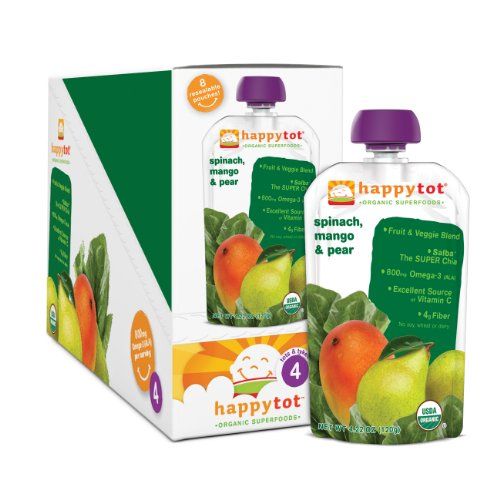 At worst, consider this an investment in the future: you will be glad to have a good understanding when the child grows up and his problems become much more serious than begging for food or getting him to be lulled. nine0003
At worst, consider this an investment in the future: you will be glad to have a good understanding when the child grows up and his problems become much more serious than begging for food or getting him to be lulled. nine0003
Read Your Baby From Birth to Two Years Online Full 📖 by Martha Sears - MyBook.
Published with the permission of the authors and their literary agents Denise Marcil Literary Agency (USA), with the assistance of the Alexander Korzhenevsky Agency (Russia)
Copyright © 1992, 2003 by William Sears and Martha Sears
© Polev D.V., translated into Russian language, 2013
© Design. LLC Eksmo Publishing House, 2014
All rights reserved. No part of the electronic version of this book may be reproduced in any form or by any means, including posting on the Internet and corporate networks, for private and public use, without the written permission of the copyright owner. nine0012
Books for expectant mothers
“Beginning of life.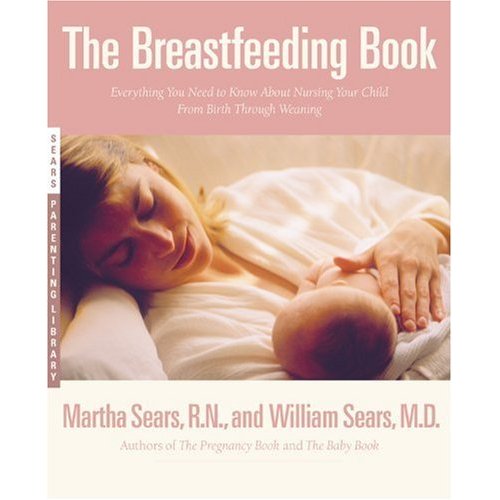 Your child from birth to one year”
Your child from birth to one year”
A child's health is much more dependent on his parents than on all pediatricians combined. The famous pediatrician Yevgeny Komarovsky offers a guide that will help you avoid many problems. This accessible and fascinating book will tell in detail about the most difficult and responsible stage in the life of a child and his parents.
"Health of the child and common sense of his relatives"
A new edition of the wonderful book by the famous pediatrician Yevgeny Komarovsky.
Everything you need to know about pregnancy and breastfeeding, child growth and development, proper care and possible illnesses. Accessible, fascinating and very useful information addressed to future and already established parents.
"Waiting for a baby"
Nine months of pregnancy is the happiest and most responsible time for every woman. Reputable obstetricians and pediatricians with many years of experience William and Martha Sears share their professional experience. The book will help you find emotional peace and arm yourself with the necessary knowledge: you will learn about all the changes that will happen to your body, well-being and consciousness. nine0003
The book will help you find emotional peace and arm yourself with the necessary knowledge: you will learn about all the changes that will happen to your body, well-being and consciousness. nine0003
“9 months of happiness. Desk Guide for Pregnant Women”
Elena Berezovskaya, researcher and obstetrician-gynecologist, presents a complete guide for expectant mothers – everything you need to know about planning a baby, pregnancy, and preparing for childbirth. The book debunks popular myths about infertility, "hidden" infections, viruses, Rhesus conflict. You will get rid of worries, fears, worries and calmly endure pregnancy.
Introduction from Dr. Sears - Bill, Martha, Bob and Jim nine0015
Bill and Martha not only wrote this book, we lived it. We share with you our experience of caring for our own eight children and caring for thousands of other children, accumulated over forty years of pediatric practice. Our experience has been enriched with new ideas since Dr. Bill and Jim and their families joined our work. Having learned to astutely observe babies and their parents, we recorded everything that works almost flawlessly for most parents. Every day in our office, we eagerly absorbed the practical advice of successful parents. This book was written in the workplace. The book is generously littered with these tips. We understand perfectly well that loving your baby and wanting to be a good parent makes you receptive to any advice regarding your child. But children are too expensive, and parents are too vulnerable for an author who offers unverified information. We seriously take full responsibility for what we teach. Each statement has been carefully tested and has stood the test of time. nine0003
Bill and Jim and their families joined our work. Having learned to astutely observe babies and their parents, we recorded everything that works almost flawlessly for most parents. Every day in our office, we eagerly absorbed the practical advice of successful parents. This book was written in the workplace. The book is generously littered with these tips. We understand perfectly well that loving your baby and wanting to be a good parent makes you receptive to any advice regarding your child. But children are too expensive, and parents are too vulnerable for an author who offers unverified information. We seriously take full responsibility for what we teach. Each statement has been carefully tested and has stood the test of time. nine0003
We also take into account the enormous busyness of today's parents. We ourselves live, juggling the suddenly emerging needs of our children and our own professional responsibilities. In this book, we present the basic principles that will help you become a responsive babysitter for your child when you find an approach that suits your child's needs and fits into your lifestyle. We recommend adopting a loving style of communication with your child in order to balance the high-tech life of the new age. nine0003
We recommend adopting a loving style of communication with your child in order to balance the high-tech life of the new age. nine0003
In this book, you will learn how to take care of your baby in such a way that both he and you show their best qualities.
Since the first edition of Your Baby from Birth to One, it has become a bible for caring for young children for millions of parents. We are very pleased to know that our advice has helped new parents around the world enjoy caring for their children. In the new edition you will find new topics, the discussion of which is based on the wishes of our readers, as well as new things that have appeared in pediatrics and child care over the past twenty years. nine0003
The euphoria of the work we have done, as a result of which many children and parents around the globe have become happier, healthier and found joy in communicating with each other, is reinforced by thousands of thank you reviews, 50,000 fans on Facebook, 5,000 readers of our magazine on Twitter and millions of visitors to our site.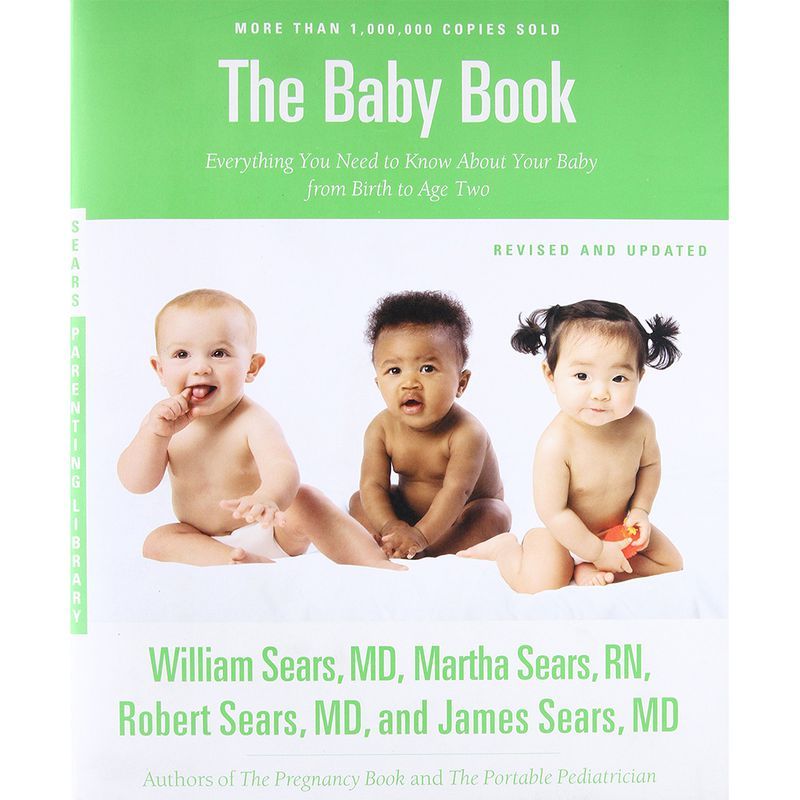 We are incredibly happy that through this book and our family advice presented in it, we have become, in some way, part of your family.
We are incredibly happy that through this book and our family advice presented in it, we have become, in some way, part of your family.
Bill, Bob, Jim and Martha Sears
San Clemente, CA
January 2013
Dr. Sears online
AskDrSears.com
Thousands of pages of child care and health information are now available online. Our online resource, personally maintained by Dr. Sears, goes into great detail about many of the topics covered in this book. We continuously update information related to child health issues so that you have the most up-to-date data. nine0003
At AskDrSears.com [1] , you can find some interesting and unique insights on topics such as pregnancy and childbirth, feeding babies under one year old, family nutrition, discipline and behavior, a capricious child, sleep and vaccinations.
Our site is unique because of:
• Detailed guide to over-the-counter medicines, including dosage information (under Dr Sears's Medicine Cabinet)
• Detailed information about many common and less common childhood illnesses (under Childhood Illnesses
• Monthly Pediatric Health News Updates (in Monthly Pediatric Health News Updates)
• Seasonal Pediatric Health Alerts (in Seasonal Pediatric Health Alerts)
• Frequently Asked Questions Questions)
• Interesting and amusing incidents from the life of Dr.






